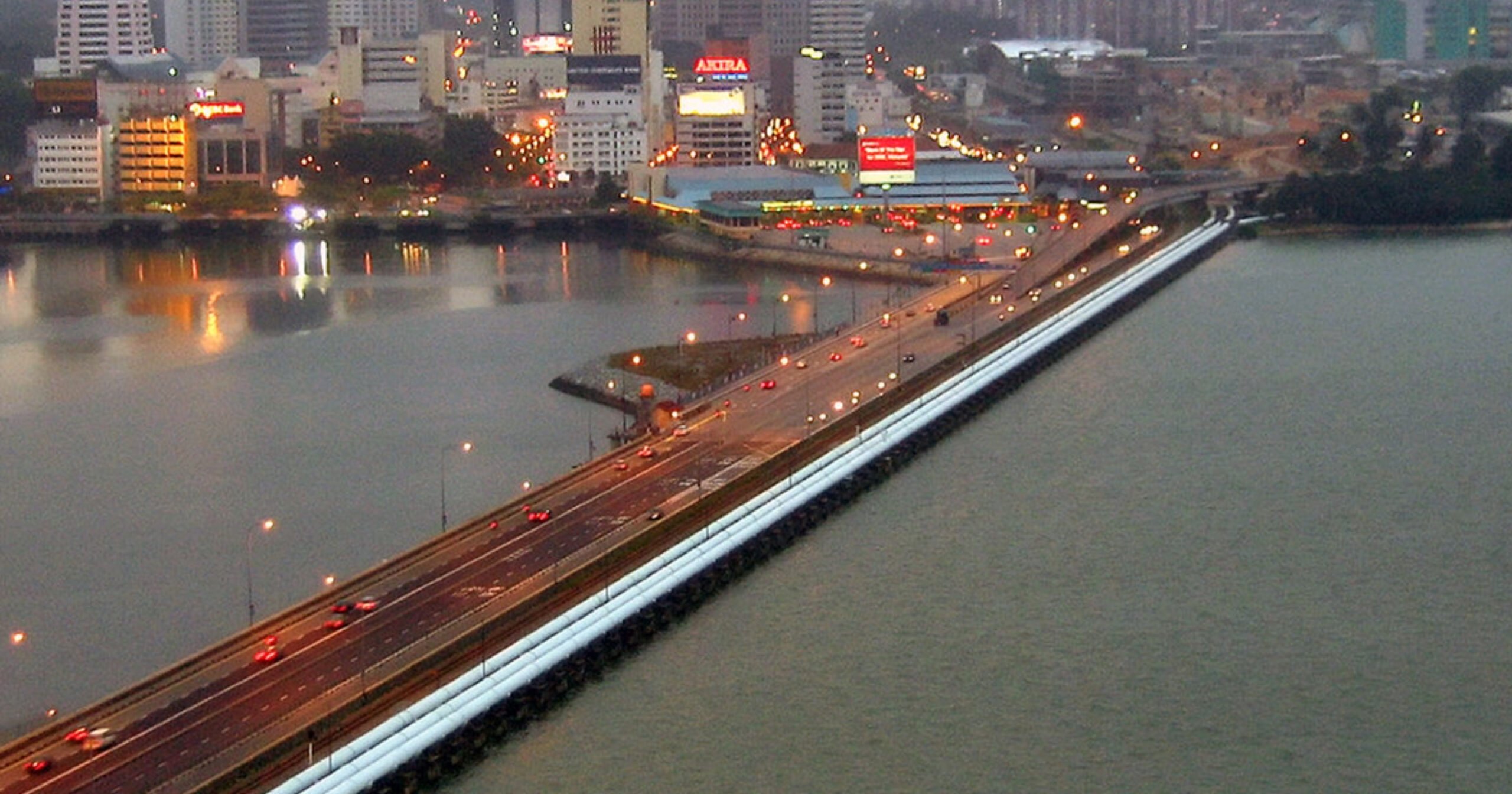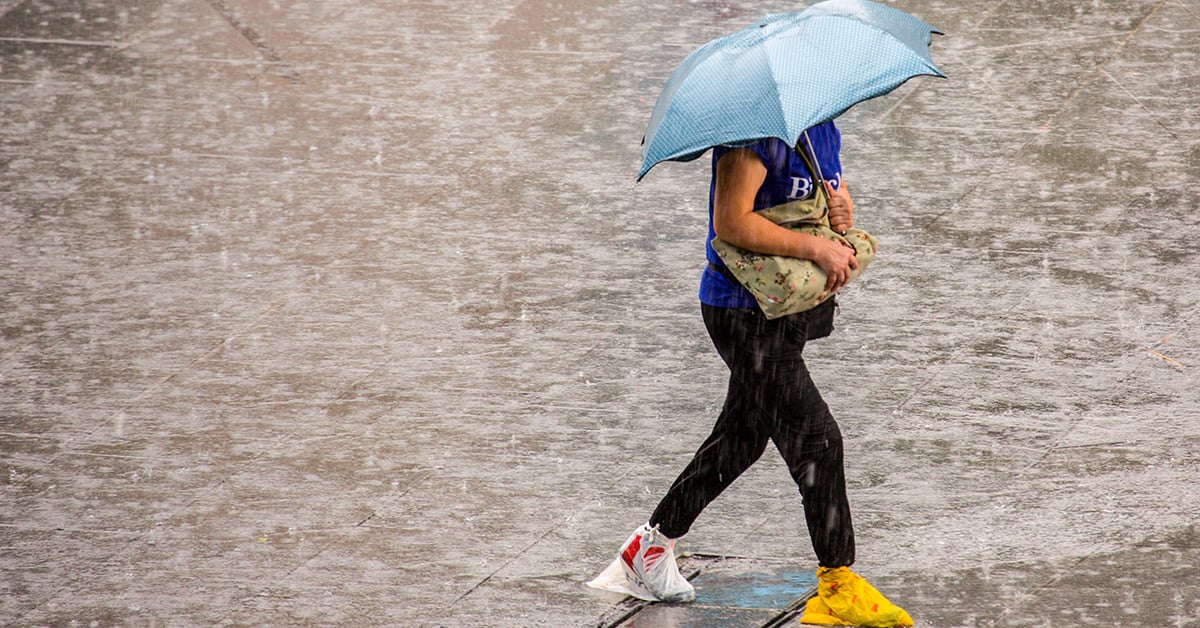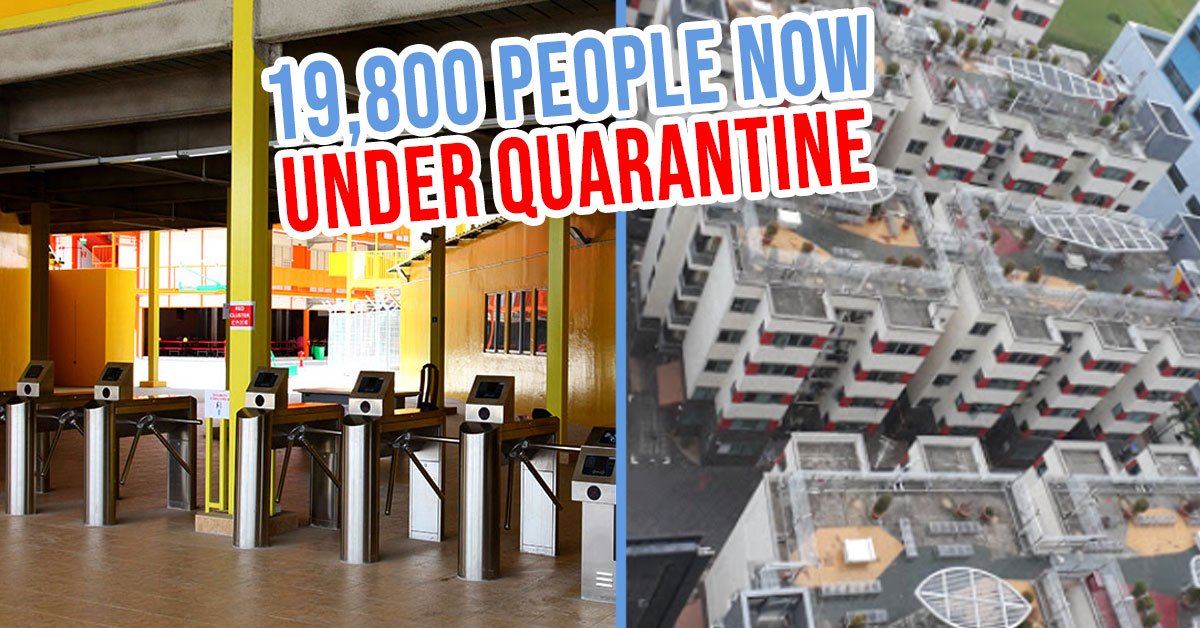If you’re driving up to JB soon, you just might catch a glimpse of the land being reclaimed at the causeway to expand Woodlands Checkpoint.
Yes, you read that right. Reclamation works will be undertaken at the causeway to expand the Woodlands Checkpoint by 44ha.
Here’s everything you need to know.
Size of About 60 Football Fields to be Reclaimed at Causeway to Expand Woodlands Checkpoint
Woodlands Checkpoint, currently standing at a total of 19ha, will be redeveloped in the coming years to span about 95ha. One of the methods undertaken to increase the size of Woodlands Checkpoint is this — reclaiming land.
If you didn’t know, land reclamation is the process of creating new land on water bodies. Singapore has deployed this strategy time and again to expand the little space that our little red dot has — this time, we’re doing it to expand the Woodlands Checkpoint.
Approximately 44ha of land will be reclaimed to do this.
For reference, that’s the size of more than 60 football fields. Or, if you’d like a more Singaporean-friendly metric, 44ha is the size of more than 4,000 4-room BTO flats.
Of the 44ha of land that’s slated to be reclaimed, 36.4ha is on the western side of the causeway linking Malaysia and Singapore, while 10ha will be on the eastern side.
From the third quarter of 2024 onwards, all the way until 2029, it’s likely that you’ll see the reclamation works in progress when you’re driving up to JB. Reclamation is tentatively scheduled to begin in the third quarter of 2024.
Works on the western side of the causeway will likely be completed in about five years, while the smaller eastern side will take slightly more than three years to be completed.
With more space, the Woodlands Checkpoint can finally be expanded to account for the large vehicular flows. The redeveloped Woodlands Checkpoint is expected to cut average customs clearance time from 60 minutes to 15 minutes during peak periods, across all vehicle types.
This means that in the future, your trip to JPO could be a mere 15 minutes away.
Proposed 44ha Reclaimed Land Area is Already Smaller Than What was Initially Studied
Before you environmentalists whip out your pitchforks, perhaps there’s one thing you should know.
The proposed 44ha of land to be reclaimed at the causeway is already a smaller land area than what was initially studied by the JTC, the government agency overseeing Singapore’s industrial spaces.
The total land area that was studied for reclamation was much larger. Specifically, 36.4ha on the western side and 30.2ha on the eastern side, bringing the total land area initially studied to 66.6ha.
That’s the size of more than 100 football fields. Perhaps we should organise football matches on the causeway instead of expanding the Woodlands Checkpoint.
However, an environmental impact assessment (EIA) conducted by JTC revealed, well, several environmental concerns with the initial plan for 66.6ha of land reclamation. As a result, the size of the land area to be reclaimed was reduced to the current proposed 44ha, mainly by reducing the size of the eastern end.
See, size really does matter.
You see, on the eastern side of the causeway lies the Woodlands Waterfront Jetty. If the land area to be reclaimed on the eastern side of the causeway is too large, the reclamation works will be too close to the jetty.
As a result, suspended sediments may find their way to the jetty, and the marine ecology and biodiversity in the jetty’s area will be negatively impacted.
To put things into perspective, while the initial plan by JTC for the eastern end of the reclamation works placed a mere 75m distance between the reclaimed portion and the jetty, the final plan now places a much larger 620m distance between the reclaimed portion and the jetty.
Environmental Impacts of the Reclamation Work
While the change to the size of the land to be reclaimed on the eastern side of the causeway is commendable, it remains that the 44ha of land being reclaimed will still have its environmental impacts.
For one, the reclamation could lead to a loss of about 35ha of subtidal seabed.
Huh? Subtidal simi?
For simplicity’s sake, the subtidal seabed is an area that you’ll probably never see. It’s an area that is submerged under the water most of the time. Fortunately, the density of animals that live in that area is low.
But that doesn’t mean nothing is living there lah, hor? It’s akin to HDB burning down your HDB block while you’re still there and explains that they did so because there were only two families still staying in the HDB block. You confirm buey song also.
Regardless, that’s not the worst environmental impact to arise from this reclamation.
On the western side of the causeway, the EIA conducted by JTC found that there was a high density of organisms living at the bottom of the mudflat there.
So, if JTC were to reclaim land there, those organisms would be affected.
The reclamation area on the western side of the causeway will also be near to the Mandai Mangrove and Mudflat nature park — naturally, the flora and fauna there could be affected by the reclamation works.
And, of course, on the eastern side of the causeway, reclamation works will be disrupting the peace and serenity at the Woodlands Waterfront Park.
What JTC is Doing to Mitigate These Impacts
Fortunately, JTC is aware of the issue as well and has a few measures planned to mitigate the impacts mentioned above.
First, JTC and the Immigration and Checkpoints Authority (ICA) will be installing silt screens to minimise the smothering effect on organisms in the mudflat area.
Second, staff working on the reclamation sites will be trained on what to do should they encounter wildlife.
Trees at the reclamation sites will be checked for wildlife nests — if active bird nests are found, the tree will be retained until the chicks can fly.
It almost sounds like a Disney movie.
Seawall construction activities and marine works will be avoided within 100m of the mudflat, during the period when migratory birds come to Singapore.
JTC will also be working with the National Parks Board to collect suitable fruits and seeds at the Mandai Mangrove and Mudflat nature park, to be replanted at suitable locations.
Additionally, a three-metre tall barrier will be built along the shoreline of Woodlands Waterfront Park, so that you and the animals there won’t have your peace disrupted by the noise of reclamation works.
Finally, JTC and ICA will also review public feedback before finalising their plans and beginning the reclamation works. Both agencies will also work with the appointed contractor to develop an environmental management and monitoring plan.
Aside from the land reclamation, there are also other plans in the works for the redevelopment of the Woodlands Checkpoint over the next 10 to 15 years.
Tuas Checkpoint is almost like the neglected middle child here.
For one, by 2032, we’ll likely see an extension at the Old Woodlands Town Centre and Bukit Timah Expressway (BKE) for vehicles exiting the Woodlands Checkpoint.
Surrounding road networks will also be upgraded to improve traffic flow, meaning that in the future, you won’t have to spend hours stuck in road congestion whenever you enter or exit JB.
Shiok.



